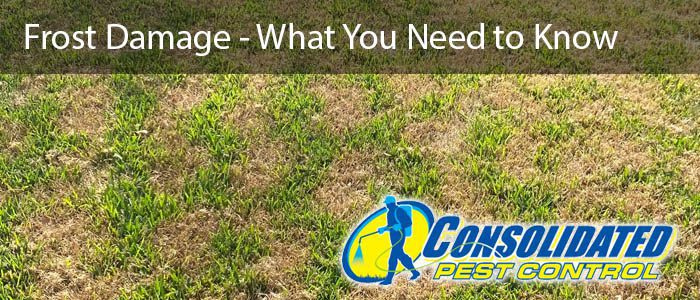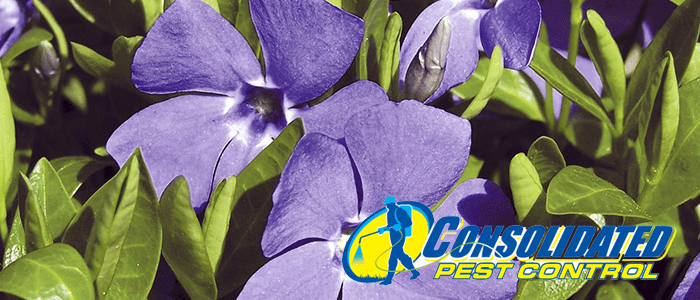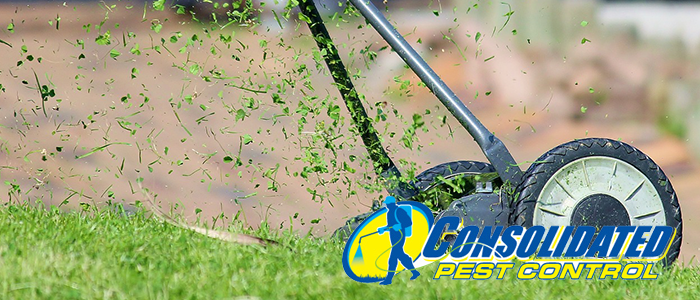Brown Patch Lawn Disease (Rhizoctonia solani fungus)
In Tampa, FL, homeowners may sometimes notice unsightly brown patches in their lawns. While several factors can lead to these patches, a specific type of lawn disease, known as “brown patch,” is often the culprit. This disease is caused by the Rhizoctonia solani fungus, a widespread problem across America, including Florida.
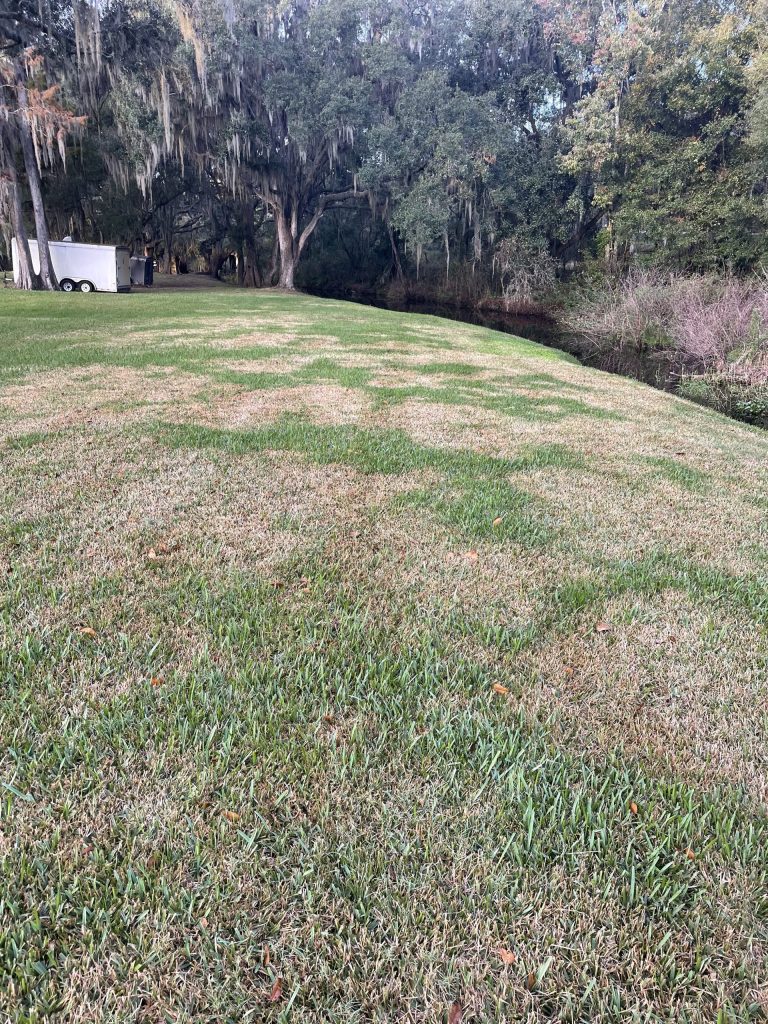 What is Brown Patch Disease?
What is Brown Patch Disease?
Brown patch disease is a fungal infection in grass caused by Rhizoctonia solani. This fungus can lie dormant in the soil and thatch layers, sometimes for years, before conditions trigger its growth. The appearance of brown patch disease is often linked to extended periods of wetness combined with air temperatures between 75ºF and 85ºF. Under these warm and moist conditions, the fungus becomes active and spreads quickly.
Impact on Grass
As a foliar disease, brown patch primarily affects the grass blades rather than the roots or crown. This means that while the grass’s appearance may be significantly impacted, its root system often remains healthy. Grass affected by brown patch can recover well if the conditions causing the disease are addressed. However, lawns that have previously experienced brown patch are more likely to encounter it again, making annual preventative measures important for maintaining lawn health.
Susceptible Grass Types
In Plant City, FL, all types of turfgrasses can be affected by brown patch disease, but the risk and severity vary. Warm-season grasses found in Florida, such as St. Augustine, zoysia grass, and Bermuda grass, are susceptible. St. Augustine grass is particularly prone to severe attacks by this fungus.
Identifying Fungal Brown Patch Disease
Rapid and unannounced, the Rhizoctonia fungus responsible for brown patch disease can be a significant concern in Tampa, FL. Early detection is crucial for its management. The most obvious symptom is the appearance of brown patches in the lawn – these are circular or irregular areas of light brown, thinned grass. These patches range in size and exhibit brittle, brown grass blades. In some cases, newer grass may grow in the center, giving a donut-like appearance. A tell-tale sign is a gray or white band, known as a “smoke ring,” around the patch’s edge.
Favorable Conditions for the Disease
Brown patch disease thrives in warm (75ºF-85ºF) and moist conditions. It commonly appears in warm-season varieties in early spring and late fall in Tampa. Persistent wetness, whether from rainfall, humidity, or poor drainage, is a key factor in disease development.
Contributing Factors
Excess moisture, often due to poor irrigation practices like overwatering or watering at night, is a major cause. High nitrogen levels, particularly from over-fertilization during warm, humid periods, can exacerbate the condition. Other factors include poor air circulation, inadequate sunlight, poor soil drainage, excessive thatch, and compacted soils.
Treatment and Management
Moisture Control: Adjust watering practices to ensure grass blades do not remain wet for extended periods. Water early in the morning, allow soil to dry between waterings, and use rain sensors or smart controllers to avoid overwatering.
Best Practices: Avoid mowing wet grass. Consider lawn aeration to improve soil drainage and air circulation, and prune trees and shrubs to reduce excessive shade.
Fertilization Caution: Refrain from fertilizing affected areas. Over-fertilization can worsen the disease. Consult with Consolidated Pest Control for a tailored fertilization plan.
Preventing Disease Spread: Avoid walking on or mowing over affected areas to prevent spreading the fungus.
Fungicide Application: Apply fungicides promptly at the first sign of disease for effective control. Fungicides help in preventing the spread and aiding recovery.
Consolidated Pest Control’s Approach
At Consolidated Pest Control, we understand the unique challenges of lawn care in Tampa. Our team is experienced in diagnosing and treating brown patch disease, offering comprehensive solutions to protect and maintain the health of your lawn.
Prevention Strategies
- Effective Lawn Care: Implement a sound lawn care regimen, including proper irrigation and mowing practices.
- Use of Preventative Fungicides: Proactively apply fungicides as part of an integrated lawn care plan.
- Professional Fertilization Management: Allow experts to manage your lawn’s fertilization to prevent nitrogen overstimulation.
- Annual Lawn Aeration: This improves soil conditions, enhancing drainage and reducing conditions conducive to brown patch development.
Partnering with Consolidated Pest Control
Choosing Consolidated Pest Control in Plant City, FL, ensures your lawn is protected against fungal diseases like brown patch. Our experienced team provides strategic lawn care plans, including preventative and proactive treatments, tailored to the specific conditions of the region. With our expertise, your lawn remains healthy and beautiful, free from the threat of brown patch disease.
Fungal Brown Patch Prevention Strategies
Maintaining a Healthy Lawn Regimen
To effectively prevent fungal brown patch, a comprehensive lawn care routine is essential. In Tampa, healthy lawns are better equipped to resist and recover from fungal infections and other diseases. Key to this is proper irrigation, especially during the warm and humid Florida weather. Overwatering should be avoided to prevent creating ideal conditions for fungal growth. Regular mowing at the correct height for your grass type is also crucial, as cutting too short can stress the turf and make it more susceptible to brown patch.
Proactive Use of Fungicides
Preventative fungicide applications are a proactive measure against brown patch. These products, when used correctly, are highly effective in preventing the disease. As brown patch tends to recur in lawns with a history of the fungus, preventive treatments are especially important. Expert application by a lawn care professional is recommended for best results.
Professional Fertilization Management
Excess nitrogen from incorrect fertilizing can trigger brown patch. Consolidated Pest Control advises having a professional lawn care team manage your fertilization routine. This ensures appropriate product selection and application timing, reducing the risk of overfertilization and subsequent fungal growth.
Annual Lawn Aeration
A key factor in preventing brown patch is ensuring good soil conditions. Annual aeration helps improve soil drainage and airflow, which in turn reduces lingering moisture conditions conducive to brown patch. Consolidated Pest Control recommends professional aeration services to maintain optimal lawn health.
Choose Consolidated Pest Control for Comprehensive Lawn Care
Our team at Consolidated Pest Control is dedicated to providing effective strategies to protect your lawn in Tampa, FL. With our comprehensive lawn care plans, we focus on both prevention and proactive treatment to safeguard your lawn against brown patch and other diseases.
Fungal Brown Patch FAQ’s
Is the Brown Grass in Patches Dead?
The root system often remains alive, even though the grass blades are affected. Gently tug on an infected blade to test; if it pulls out easily, it’s dead. In severe cases, reseeding may be necessary.
Grass Resistance to Brown Patch?
No grass is completely resistant, but some have moderate resistance. Consider overseeding with resistant varieties if brown patch is recurrent.
Activity on Diseased Lawn Areas?
Avoid walking or other activities on infected areas to prevent spreading the fungus.
Watering Practices During an Outbreak?
Adjust watering to ensure the lawn doesn’t stay wet for long. Morning dew might be sufficient moisture during an infestation.
Does Shade Affect Brown Patch?
Yes, shaded areas retain moisture longer, promoting fungal growth. Pruning to increase sunlight exposure can help mitigate this.
For expert lawn care advice and services in Plant City, FL, trust Consolidated Pest Control to keep your lawn healthy and free from brown patch disease.
Drought-Related Brown Patch
In Tampa, drought stress is a common cause of brown patches in lawns. Despite seemingly adequate rainfall or irrigation, grass can still suffer from insufficient hydration, leading to unsightly brown areas.
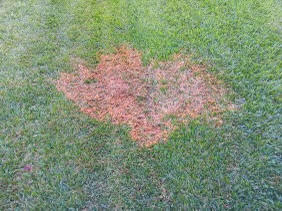 Causes of Drought Brown Patch
Causes of Drought Brown Patch
Drought brown patches often result from extended periods of hot, dry weather or inadequate watering practices. It’s important to adjust irrigation schedules seasonally and ensure that your sprinkler systems are functioning correctly and efficiently.
Impact on Grass
Lack of adequate water forces grass into a dormant state, turning blades yellow or brown as the plant conserves energy and moisture for its roots. This dormancy is a natural response to water deprivation and, in many cases, does not mean the grass is dead. Recovery is possible once regular watering resumes. However, prolonged periods without water (over 4-8 weeks) increase the risk of long-term damage.
Grass Types and Drought Tolerance
All grasses can be affected by drought, but their resilience varies. For instance, Bermudagrass shows remarkable drought tolerance and recovery, whereas Kentucky bluegrass is less tolerant and may require reseeding after extended dry periods. Choosing the right grass type for Tampa’s climate is crucial, especially in areas prone to drought.
Consolidated Pest Control’s Approach to Drought Brown Patch
At Consolidated Pest Control, we understand the unique challenges posed by the Tampa climate. Our team provides expert advice on selecting drought-resistant grass types and optimizing irrigation systems to prevent drought-related brown patches. With our guidance and services, your lawn can remain lush and healthy, even during dry spells.
Tips for Preventing Drought Brown Patch
- Optimize Watering: Adjust your irrigation schedule with the changing seasons and inspect your sprinkler systems regularly.
- Select Drought-Tolerant Grass: Choose grass varieties suited to withstand Tampa’s climate.
- Monitor Lawn Health: Keep an eye on your lawn’s condition, especially during hot, dry periods, to address issues early.
By partnering with Consolidated Pest Control, homeowners in Tampa, FL, can effectively manage and prevent drought-related brown patch, ensuring a healthy and vibrant lawn throughout the year.
Drought Brown Patch FAQ
How Can I Confirm Drought Stress is Causing Brown Patch?
To test for drought stress, insert a screwdriver about 6 inches into your soil. If it comes out dry, your lawn likely needs more water. A moist and dirty screwdriver suggests adequate watering. If your lawn is sufficiently watered yet still shows brown patches, you may be dealing with a different issue, like a lawn disease.
What Grass Types Are Most Drought-Resistant?
In Tampa, the following warm-season grasses are known for their drought resilience:
- Bermuda grass
- Zoysia grass
- St. Augustine grass
Remember, even drought-tolerant grasses need proper watering and lawn care.
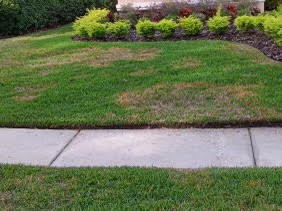 Should I Avoid Walking on Grass During Drought?
Should I Avoid Walking on Grass During Drought?
Yes. It’s best to minimize traffic on drought-stressed areas of your lawn. These areas are more susceptible to damage, and footprints or tracks can lead to further harm, such as soil compaction.
Is My Grass Dead Because of the Drought?
Not necessarily. Grass often turns yellow or brown and enters dormancy as a survival mechanism during drought. However, prolonged drought without water can lead to permanent damage or death for some grass types.
What Are the Costs to Repair Drought-Induced Damage?
If the grass is dormant but alive, recovering from drought stress usually involves regular lawn care practices, which means minimal additional cost beyond standard watering and mowing.
For severe damage or dead grass, solutions like aeration and replanting might be necessary. Costs can vary, but typically, professional lawn restoration ranges from $150-300. Consulting with a lawn care company like Consolidated Pest Control is recommended to determine the best course of action for your specific situation.
Brown Patches Caused By Chinch Bugs
In Tampa, as in many Southern regions, the Southern Chinch Bug is a prevalent pest causing significant damage to lawns. These insects are often the hidden culprits behind brown patches that may initially seem like disease or drought effects.
Understanding Chinch Bug Brown Patches
What Are Southern Chinch Bugs?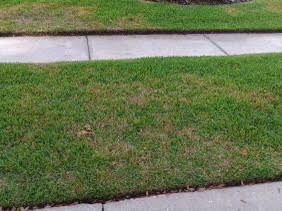
Southern chinch bugs (Blissus insularis) are a major turf pest in Florida. They undergo five life stages in a gradual metamorphosis process. Adults are tiny, around ⅛-⅒ inch, with black bodies and distinctive white wings marked with triangular black spots. The nymphs start orangish-pink with white stripes and evolve into brownish-black before adulthood.
How Do Chinch Bugs Cause Lawn Damage?
These pests feed on grass sap, draining the blades of essential fluids, causing dehydration and death. Their feeding is doubly harmful due to a toxic saliva that kills plant tissue. As they feed and multiply, the affected grass area expands, forming noticeable brown patches.
Impact on Grass Health
Chinch bug infestations can devastate large grass areas, leading to significant turf damage. Early detection and treatment are crucial. St. Augustine grass is particularly susceptible, often requiring reseeding or replanting after severe infestations. While these bugs may also feed on centipedegrass, zoysiagrass, bahiagrass, or bermudagrass, the damage to these species is generally less severe unless grown near St. Augustine grass.
Consolidated Pest Control’s Approach
At Consolidated Pest Control in Plant City, FL, we specialize in identifying and treating chinch bug infestations. Our experts are skilled in distinguishing chinch bug damage from other lawn issues and implementing effective treatment plans. Our goal is to restore and maintain the health of your lawn, saving you time and the expense of extensive lawn repairs.
Tips for Managing Chinch Bug Infestations
- Regular Lawn Inspections: Frequently check your lawn, especially during warm months, for signs of chinch bug activity.
- Proper Lawn Care: Maintain healthy lawn practices, as robust turf can better withstand pest invasions.
- Expert Intervention: At the first sign of an infestation, contact a professional lawn care service like Consolidated Pest Control for assessment and treatment.
Partnering with Consolidated Pest Control ensures your lawn in Tampa, remains healthy and free from the detrimental effects of chinch bugs and other pests. Our comprehensive care and pest management strategies are tailored to the unique needs of your lawn.
Identifying Chinch Bug Brown Patches
Chinch bugs create unique patterns of damage in lawns that can be distinguished from other common lawn problems. Understanding these signs is crucial for homeowners in Tampa, FL, to effectively manage their lawns.
Symptoms of Chinch Bug Brown Patches
Chinch bug damage appears as irregularly shaped patches of dead or brown grass, typically surrounded by a border of dying or yellow grass. These patches expand randomly and increase in size with rising insect populations, often developing rapidly depending on weather conditions and turf health.
Unlike Brown Patch Disease, which results in rounder, more regularly circular patterns, chinch bug damage is more random and irregular. Distinguishing between drought-induced brown patches and chinch bug damage can be more challenging, as both cause irregularly shaped areas of brown grass.
Confirming Chinch Bug Presence
To confirm chinch bugs, inspect the yellowing grass around a dead spot. Chinch bugs are usually found in this area, actively feeding. The “coffee can test” is a classic method to detect these pests. Place a trimmed coffee can into the soil, fill it with water, and observe if chinch bugs float to the surface within a few minutes.
 Ideal Conditions for Chinch Bug Activity
Ideal Conditions for Chinch Bug Activity
Southern chinch bugs thrive in hot, dry conditions, particularly in sunny areas. Lawns under drought stress in Tampa, FL, are highly vulnerable to chinch bug infestations. Dry weather increases their survival rates by reducing disease occurrences that can impact their eggs and nymphs. These pests are most active during the dry heat of summer and early fall.
Consolidated Pest Control’s Expertise
At Consolidated Pest Control in Plant City, FL, we have extensive experience identifying and treating chinch bug infestations. Our professionals are skilled in differentiating chinch bug damage from other lawn issues and implementing effective control strategies.
Managing Chinch Bug Infestations
Regular Monitoring: Regularly inspect your lawn for signs of chinch bug activity, especially during peak activity months.
Proactive Lawn Care: Maintain a healthy lawn through proper watering and fertilization, as healthier lawns are less susceptible to pest damage.
Professional Pest Control: If chinch bugs are detected, prompt professional intervention is crucial to prevent extensive damage to your lawn.
Partner with Consolidated Pest Control to protect your lawn in Tampa, FL, from chinch bug damage. Our tailored pest management and lawn care solutions ensure a healthy, vibrant lawn free from the distress of pest infestations.
Effective Treatment and Prevention of Chinch Bug Brown Patches
Optimal Irrigation Practices
Proper watering is key in controlling chinch bug populations. In Tampa, both over- and under-watering can exacerbate chinch bug issues. These pests flourish in hot, dry conditions, so insufficient watering can attract them and weaken your turf. Conversely, over-watering can lead to overly saturated soil and thatch buildup, making your grass more prone to chinch bug invasions. Monitoring your St. Augustine grass during summer for drought stress is essential.
Dethatching Your Lawn
Thatch provides an ideal habitat for chinch bugs. Dethatching is an effective control measure, removing their protective environment and enhancing the effectiveness of other treatments. Aeration is the best method for dethatching and improves overall turf health. Consult with a local lawn care company like Consolidated Pest Control to determine the best approach for your property.
Insecticide Application
Insecticides are highly effective against chinch bugs. If you notice visible damage, immediate treatment is recommended to control their population. Incorrect application, however, can harm beneficial insects and exacerbate the problem. For safety and environmental health, it’s best to hire a professional pest control company like Consolidated Pest Control for accurate and effective treatment.
Chinch Bug Elimination
Consolidated Pest Control in Plant City, FL, offers expert chinch bug control, applying treatments at the optimal time for maximum effectiveness. Our trained staff will implement a tailored treatment plan to protect your property from chinch bug damage.
Preventing Chinch Bug Infestations
Regular Lawn Care
Maintaining a healthy lawn is key to preventing chinch bug infestations. Regular fertilizing, aeration, and mowing help keep your lawn robust and less inviting to chinch bugs. Ensure consistent moisture, especially during hot, dry months, as chinch bugs prefer weakened, drought-stressed lawns.
Biannual Aeration
Aeration reduces thatch build-up, depriving chinch bugs of their ideal habitat. It’s recommended to aerate your lawn in Tampa twice a year. Proper mowing and fertilizing also help minimize thatch accumulation.
Regular Lawn Inspections
Early detection and treatment are crucial in controlling chinch bug damage. Regularly inspect your lawn during summer for any signs of damage, especially in areas previously affected by chinch bugs. If you’re unable to perform these inspections, consider enlisting a lawn care or pest control service.
Partnering with Consolidated Pest Control
Regular lawn care and pest control services are your best defense against chinch bugs. Consolidated Pest Control offers comprehensive lawn care and pest control programs to protect your yard year-round. Our services ensure that your lawn in Tampa remains healthy, green, and free from chinch bug damage.
For professional assistance in preventing and treating chinch bug brown patches, contact Consolidated Pest Control in Plant City, FL. Our expert team is committed to keeping your lawn beautiful and healthy in every season.
Chinch Bug Brown Patch FAQ
Is My Grass Dead Due to Chinch Bugs?
In most cases, yes. Chinch bugs extract the vital juices from grass blades, leading to dehydration, withering, and eventual death of the grass. The brown areas in your lawn are likely dead, and the surrounding yellow areas indicate actively dying grass. Prompt pesticide treatment is crucial upon noticing any signs of chinch bug damage.
Can Grass Recover Post-Chinch Bug Infestation?
Recovery requires intervention. Chinch bug damage, especially in St. Augustine grass, is often severe. After eliminating the infestation, you’ll need to reseed or lay new sod to restore the damaged areas.
Should I Avoid Walking on Damaged Lawn Areas?
Yes. It’s best to stay off areas damaged by chinch bugs. These sections are especially sensitive to further stress, and any additional traffic can exacerbate the damage.
Do Other Pests Cause Similar Lawn Damage?
Indeed, other pests like grubs, caterpillars, moths, armyworms, Bermuda mites, and different species of chinch bugs (such as the common chinch bug) can cause brown patches. Each pest affects grass differently and leaves distinct damage patterns.
Are Natural Treatments Effective Against Chinch Bugs?
We advise against using diatomaceous earth or dish soap for chinch bug control. Diatomaceous earth can harm beneficial insects and is not reliably effective. Dish soap can also kill helpful insects and potentially damage trees, flowers, and plants.
Professional Assistance from Consolidated Pest Control
For expert guidance and treatment for chinch bug issues in your lawn, contact Consolidated Pest Control in Plant City, FL. Our professional team can accurately diagnose and effectively treat chinch bug infestations, helping restore the health and beauty of your lawn.
Latest Articles
1
Choose Your Service
Pest Control/Lawn Fertilization
We form an invisible line of defense between you and the insects.
With Consolidated’s pest control service, our technicians spray the perimeter of each client’s residence with a treatment that repels all manner of household pests.
Consolidated’s lawn fertilization service combines preventative and curative solutions to keep your lawn healthy and green all year long.
2
Schedule Your Appointment
Fast and Convenient
With our award winning pest control service, we can eliminate your pests in less time for less money. Our quotes are accurate and affordable.
Our lawn fertilization service quotes are as quick as a phone call, and our technicians offer info and updates on your lawn with each visit.
Request a quote today for fast, friendly service.
3
We Take Care of the Rest
Expert Technicians
At Consolidated Pest Control everything we do is filtered through our E.T.A. Core Values.
We are committed to a positive culture which will create the necessary structure to ensure the success of our team members and the company overall.
Consolidated Pest Control is the best in the industry, because we pride ourselves in offering professional service with tangible lawn and pest control results.


